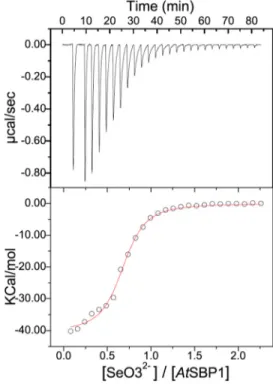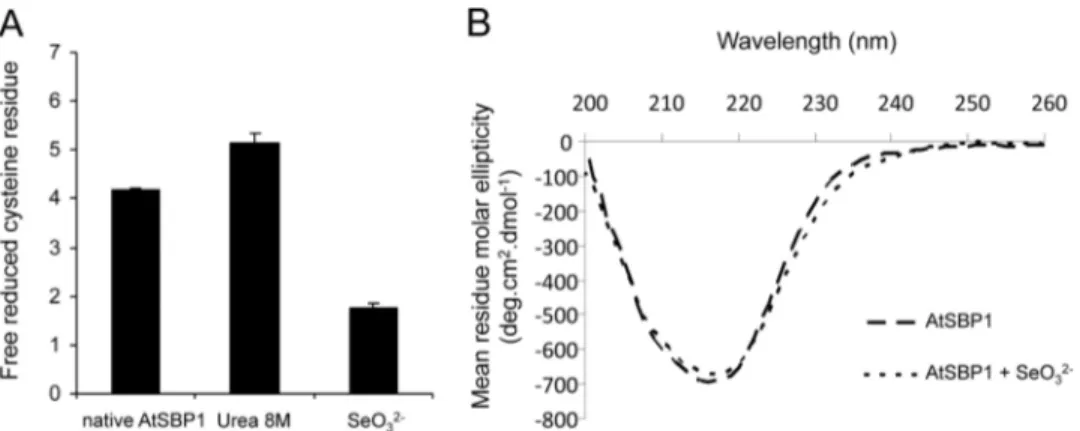Biochemical and biophysical characterization of the selenium-binding and reducing site in Arabidopsis thaliana homologue to mammals selenium-binding protein 1.
Texte intégral
Figure




Documents relatifs
Especially, a com- parative study involving camels and cows having comparable weight and fed with the same diet and supplemented orally with 2 mg of selenium per day under selenite
The effect of inoculation of selenium solution to pregnant camels was investigated to assess the impact on selenium status of the new-born and on the
This study is the first step to better understand the role of TcSBP in cacao resistance as well as for the development of control strategies of the witches’
species as potential sources of diverse and nove! extracellular enzymes. Nocardiopsis species: a potential source of bioactive compounds. Nocardiopsis algeriensis
Alexandre Pinel, Jean-Paul Rigaudière, Elodie Pitois, Chrystele Jouve, Béatrice Morio, Frédéric Capel.. To cite
Note: Regular languages with no conflicts (forbidden pairs) are regular but have exponential size DFA.. Alexis Cornet,
With developmental delay and characteristic laughter, with or without seizures 3 None With ataxia, characteristic laughter, normal EEG, no seizures 1 None 8 Abnormal EEG with or
The role of the SDC in the Global Programme on Climate Change also differs from the one it normally adopts in its traditional development cooperation activities, in that it